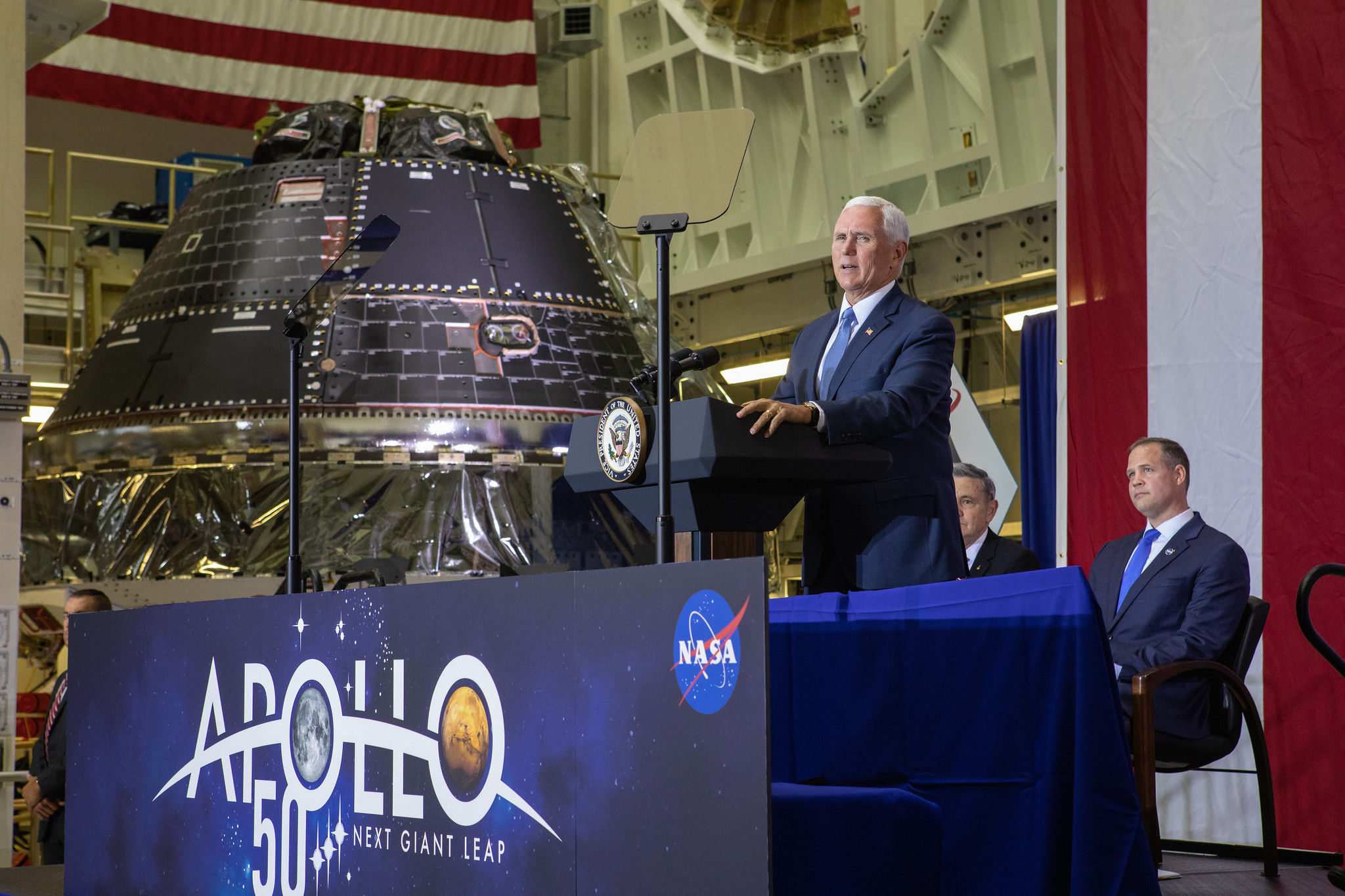Create a free profile to get unlimited access to exclusive videos, sweepstakes, and more!
NASA’s Orion spacecraft has finally been revealed, and it’s one giant leap

NASA was relentlessly teasing the Orion spacecraft for a while as it went through the final stages of construction, and now we finally can see what the crew capsule that will to take the first woman and next man to the moon is actually going to look like.
Yes, it looks just as futuristic as anything going to the moon in five years should. But there’s more.
The 50th anniversary of the Apollo 11 landing is kind of a big deal. Even moon-themed Oreos were made to commemorate the event. It was Vice President Mike Pence who spoke at the Neil Armstrong Operations and Checkout Building at NASA’s Kennedy Space Center in Florida and announced that the spacecraft is officially ready. In 1969, NASA was determined to prove that it could land humans on the lunar surface and leave not just bootprints, but American bootprints, in the moon dust.
“The Orion crew vehicle for the Artemis 1 mission is complete and ready to begin preparations for its historic first flight,” said Vice President Pence, who joined NASA Administrator Jim Bridenstine and Apollo 11 Lunar Module Pilot Buzz Aldrin (among other NASA luminaries) onstage.
We’ve still got some time until 2024, but in terms of preparing for a lunar mission, it isn’t much. NASA isn’t just making a return to the moon and planting a flag. The space agency wants to return in a sustainable way — meaning, setting up this mission to make return missions possible. We need to literally fly to the moon and back multiple times to build a lunar space station and eventually (you knew this was coming) launch humans to Mars.
“Similar to the 1960s, we too have an opportunity to take a giant leap forward for all of humanity,” Bridenstine said. "NASA is calling this the Artemis program in honor of Apollo’s twin sister in Greek mythology, the goddess of the Moon. And we are well on our way to getting this done.”
Orion finally emerged after a process that involved thousands of parts and countless hours of assembly, not to mention even more hours of testing to certify that this thing can actually fly and stay afloat. The capsule’s European Service Module is also ready. Built by ESA and manufactured by Airbus, this module will power and propel Orion as it sets out on its mission.
Humankind's small steps toward the moon are adding up, because operations to join the two modules have already begun. When they are joined, they will get extra protection with a heatshield backshell panel for their first flight test on NASA’s Super Guppy aircraft in Ohio. Anything going into deep space needs to prove it can withstand that brutally cold, atmosphere-less, radiation-bombed environment.
Assuming Orion passes that test, it will return to Florida and undergo final processing and inspections before it is fueled and sent to Kennedy’s Vehicle Assembly Building. This is pretty much the point of no return. The capsule will be integrated with the SLS rocket before taking off from Launch Pad 39B for unmanned mission Artemis 1. Artemis 2 is going to be the iconic mission that will put astronauts on the moon again, and further out, Artemis 3 will bring in more moonwalkers.
Seeing humans touch down on the moon in just five years seems surreal, but suddenly it’s becoming all too real.
(via NASA)


























